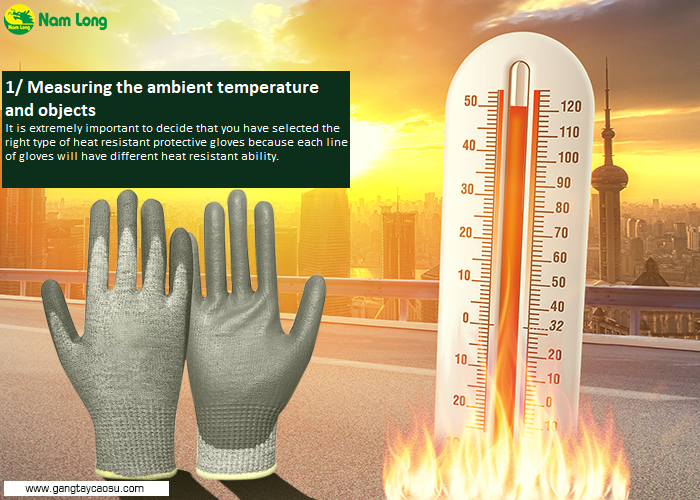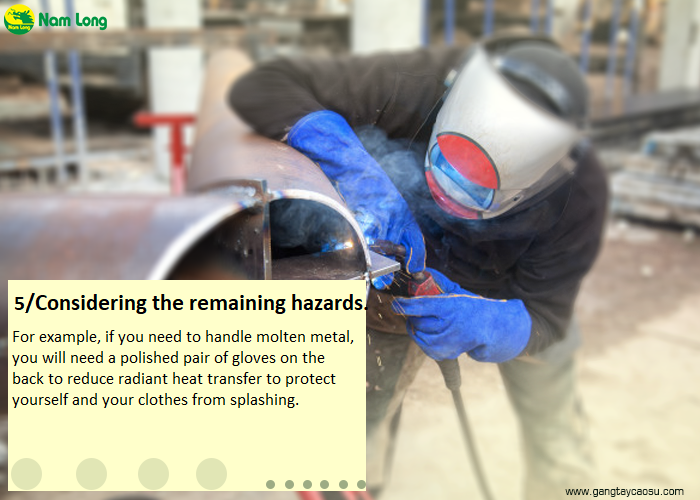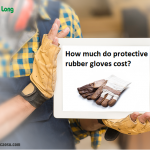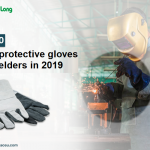Choosing the right heat-resistant protective gloves will help protect your hands against the effects of external heat such as burns, or even effects threatening our lives.
Heat-resistant protective gloves are equipment designed to protect workers' hands from burns or injuries caused by heat, sparks, or flames. Currently, the market of heat-resistant protective gloves is quite diverse. Therefore, if you want to find a product to make sure that your workers are not injured in working, you need to know how to choose them appropriately.
1/ Measuring the ambient temperature and objects

It is extremely important to decide that you have selected the right type of heat resistant protective gloves because each line of gloves will have different heat resistant ability. In addition, the temperature in each specific environment will be different from what is theoretical. So make sure your protective gloves are resistant to the heat in the working environment or objects in processing.
You can use an infrared thermometer to do this. They will help you know the correct working temperature and objects to choose the appropriate gloves.
2/ Ensuring the gloves have an appropriate heat-resistant level
This means that after you have measured the temperature and choose the type of gloves with the right level of protection, you should test them with different heat levels until reaching the highest level in the working environment. The reason is that you will not be able to know how the gloves will change in the working process. Therefore, it is best to test them first.
Currently, many countries apply CHAR testing (according to ASTM F1060-87). Simply put, this test shows the maximum temperature that you can hold an object for 40 seconds before you feel painful and 15 seconds before you are burnt at level 2. Applying this test will help you choose the right type of heat resistant gloves.
3/ Checking the temperature of the outer-layer material of the gloves
Currently, there are many types of heat resistant protective gloves made from specific materials, each of them will correspond to different heat protection degrees. Therefore, to ensure the safety of workers in the long run, manufacturers need to make sure the outer layer is made of the best material.
However, not any manufacturer produces high-quality products. Therefore, when choosing, you need to pay attention to the outer layer material of the gloves to ensure they have a good level of heat resistance.
Here is a table of the degree of heat resistance of materials commonly used for gloves:
|
Material |
Poison |
Degree Fahrenheit |
|
Leather |
205 degrees Celsius |
400 degrees Fahrenheit |
|
Wool |
100 degrees Celsius |
212 degrees Fahrenheit |
|
Cotton |
205 degrees Celsius |
400 degrees Fahrenheit |
|
Kevlar |
426 degrees Celsius |
800 degrees Fahrenheit |
|
Nomex yarn |
370 degrees Celsius |
700 degrees Fahrenheit |
|
Carbon |
1650 degrees Celsius |
3000 degrees Fahrenheit |
|
PBI |
480 degrees Celsius |
|
4/ Do not forget the dexterity of the gloves.
When you have met the safety criteria when choosing heat resistant protective gloves, you should pay attention to the dexterity of the gloves which means they have the right fit to brings a sense of comfort to users, without affecting the quality of work. It's best for workers to try them on and work to test this level of dexterity.
5/ Considering the remaining hazards.

Not only heat but also the danger of your working environment, please list them and find the best solution.
For example, if you need to handle molten metal, you will need a polished pair of gloves on the back to reduce radiant heat transfer to protect yourself and your clothes from splashing.
For environments that may contact with sharp objects, you will need a good cut-resistant pair of gloves.
The market of heat-resistant protective gloves is quite diverse; depending on the degree of heat resistance, they will correspond to different jobs and environments. Therefore, to avoid unintended risks, due to lack of knowledge, it is good for you to learn about the characteristics of each glove line and consider which is the most suitable equipment.
>>> See more: 7 reasons to use rubber gloves for cooking and washing dishes
Please contact us:
Address: 103 Tran Van Kieu Str, Ward 10, District 6, Ho Chi Minh City.
Email: namlongco.gloves@gmail.com
Tel: (+84)28.3755.4772 – (+84)983.101.434









